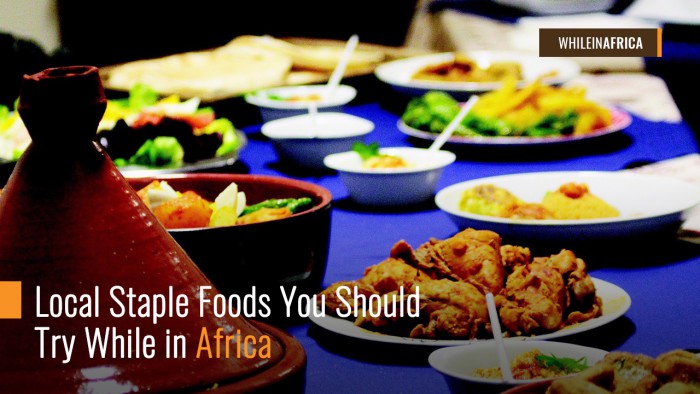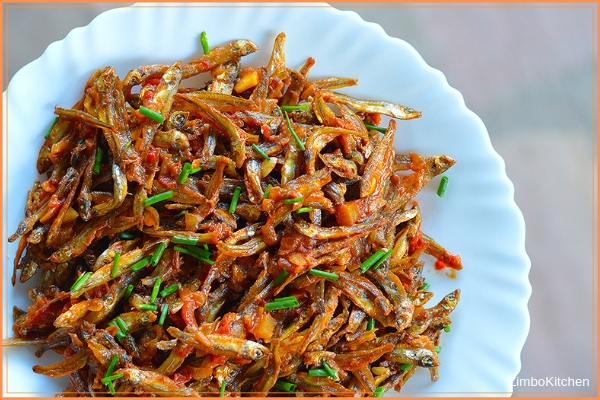African cuisine is as distinct as the many cultures that exist on the continent, and they not only reflect the immense riches of this diversity but are also full of spice and flavour. Each region poses its particularities and this makes African dishes unique from region to region. Most African food is best enjoyed with your bare hands and there’s a delicate art to doing so — most staples require you to use the tip of three or four fingers of your dominant hand. Of course, you can always use cutlery, but where’s the fun in that? Besides the number of great-tasting stews, soups and snacks that couldn’t be listed here, below are a shortlist of top local foods you should try while in Africa:
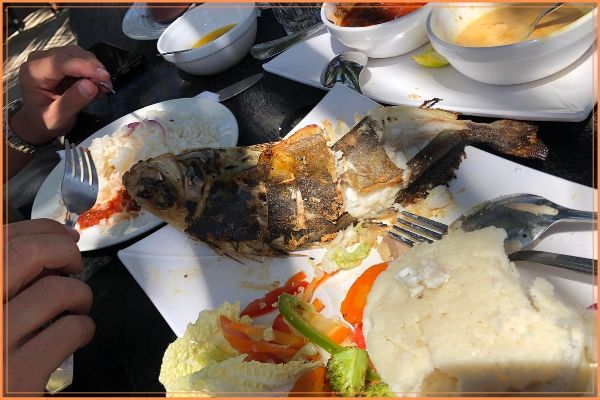
Ugali (Tanzania/Kenya)
While this starchy, polenta-like side dish is known as Ugali in Kenya and Tanzania, it is a delicacy enjoyed across various African countries, albeit with different names. For instance, it is called Nsima or Nshima among locals in Malawi and Zambia, while Zimbabweans call it sadza. It is usually served accompanied with meat or vegetable stews, greens, and soured milk, creating a surprising explosion of flavors on the palate. Ugali is usually eaten with the fingers, pulling off a small ball of mush, rolling it gently then forming an indentation with your thumb, which is used to scoop up the accompanying stews and other dishes.
Cooking Ingredients
- 4 cups of water
- 1 teaspoon of salt
- 2 cups of freshly ground white cornmeal
Serving Variations
- Though white cornmeal is the grain mostly used for ugali, some locals also use sorghum, millet, coarse cassava flour or even hominy grits.
- Some restaurants add a little butter for a richer flavor when cooking Ugali.
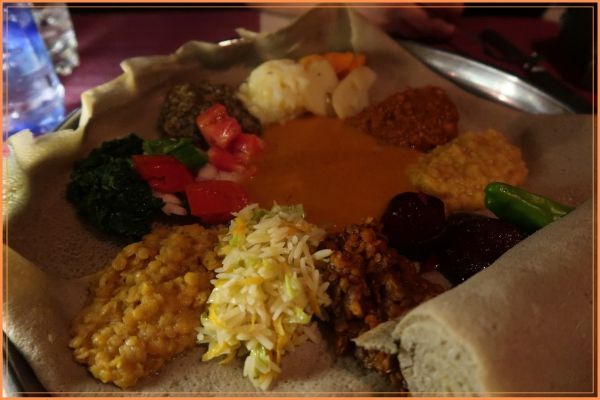
Injera (Ethiopia)
Made with teff, a tiny round grain that grows in the highlands of Ethiopia, Injera is a spongy sour flatbread used to scoop up meat, which also makes it a tasty utensil. It is often best served in a big tray on which the stews are served, soaking up their juices as the meal progresses, and topped with lots of viands from beans to meats and vegetables.
Cooking Ingredients
- ¼ cup of teff flour
- ¾ cup of all-purpose flour
- 1 cup of water
- A pinch of salt
- Vegetable or peanut oil
Serving Variations
Some locals prefer a certain amount of sour appeal in their Injera so they often experiment by adjusting the ratios of wheat and teff flours when making it. Complete your Injera experience by eating it with famous Shiro, a homogeneous stew made from powdered chickpeas or broad bean meal.
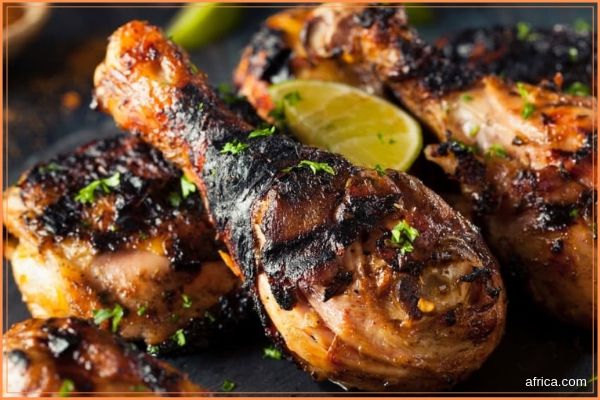
Peri Peri Chicken (Mozambique)
Peri Peri chicken is a mouth-watering meal served with big bowls of crispy salads and hot chips or Portuguese bread. It is one of the most popular dishes in Mozambique and is by far one of the juiciest, beautifully browned roast chickens you’d ever see. It is also made with a scintillating smokey spicy coconut creamy sauce. When in a restaurant, the aroma from the grill wafting through the air can get your mouth salivating and can make you just want to dive in, even before the meat has been properly cooked.
Cooking Ingredients
- 100 ml of olive oil
- 8 crushed garlic cloves
- ½ cup of freshly squeezed lemon juice
- 1 tablespoon of paprika
- Coconut Milk
- 8 torn bay leaves
- Whole chicken cut into pieces
- 2 tablespoons of peri peri
Serving Variation
Though pieces of chicken are used due to its convenience on the grill, you may also see servings of a whole chicken.
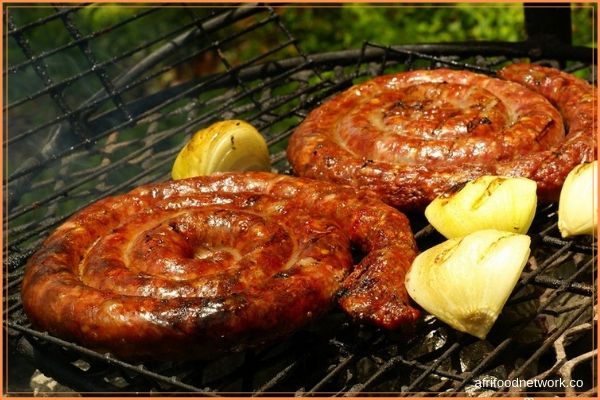
Boerewors Sausage (South Africa)
A robust and flavorful mix of beef and pork, the South African Boerewors sausage is the meat you need for your next grilling party! Boerewors (pronounced BOO-ruh-VORS) means “farmer’s sausage” and can be eaten with bread or potato salad and grilled vegetables. In addition to its unique flavor, another thing that makes this dish stand out is the way the meat is ground, being coarse-ground sausage, which gives it more chunky and coarse texture. A must-try while in South Africa.
Cooking Ingredients
- 4 pounds of pork
- 1 pound of pork fat
- 35 grams of kosher salt and ground clove
- 1 tablespoon of cracked black pepper
- 3 to 4 tablespoons of coarsely ground coriander seed
- 2 tablespoons of ground allspice and brown sugar
- ¼ cup of malt vinegar
- ¼ cup of brandy
- Hog Casings
Serving Variation
Asides pork, wild boar or venison can also be used, or even the mixture of the three. The flavor comes out even more.
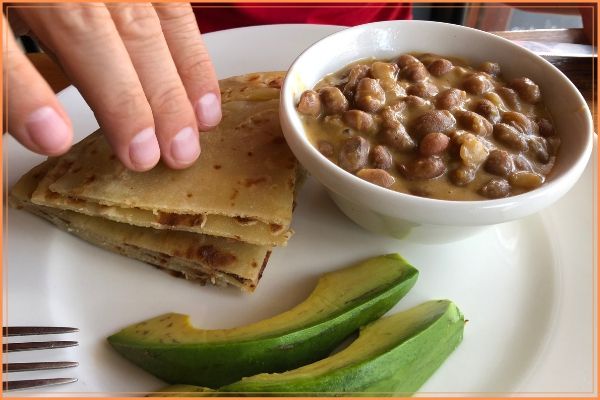
Chapati Za Ngozi Kenya
If you are traveling across East Africa, you will most likely come across this popular unleavened pan-grill bread. It is made with white or all-purpose flour all coiled up and is most often served with stews, vegetables, meat and sometimes even eaten on its own. The purpose of the coil is to make the chapati light and flaky. They make a good breakfast dish especially with Chai ya Tangawizi (Kenyan Ginger Tea).
Cooking Ingredients
- 3 cups of all-purpose flour
- 1 teaspoon of sugar
- 1 ½ teaspoon of salt
- 3 tablespoons of ghee (clarified butter)
- 1 ¼ cups of warm water
Serving Variations
Instead of ghee, some people prefer to brush the Chapati with oil. To enjoy the feel and taste of a homemade fresh Chapati, the dish is best consumed the day it is made, although it can also be frozen in an airtight bag for up to a month.
Kapenta with Sadza (Zimbabwe)
Kapenta or matemba as it is locally pronounced is a very common dish in Zimbabwe and some parts of Zambia. It consists of a beautiful fish that has been dried in the sun on a rack over for a day, making it able to be kept for long periods without refrigeration. It is usually prepared in a stew and eaten with Sadza, a staple made from ground maize or even rice.
Cooking Ingredients
- 250 g of dried kapenta
- 1 medium of chopped onion
- 1 large chopped tomato
- 1 tablespoon of curry powder
- Frying oil
Cooking Variations
Some restaurants add soup powder to the Kapenta stew to make it thicker and add more flavor.
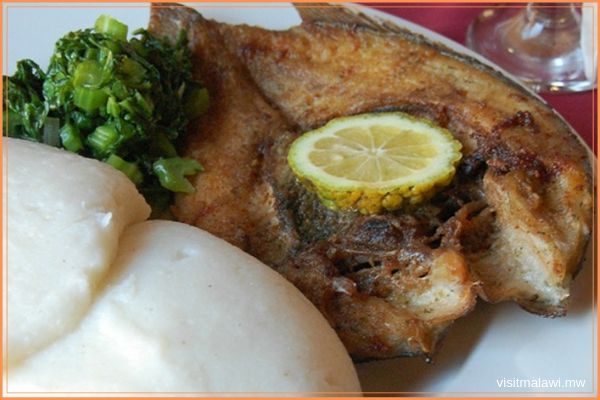
Chambo (Malawi)
Chambo is a species of the tilapia family found in Malawi’s lakeshore areas. It is sometimes dried in the sun, then roasted, cooked or fried and served with a side of soup. It is usually eaten with rice or Nsima, a starch staple thickened porridge made from maize. It is delicious whichever way it is served and is so popular that even the most famous hotels in Malawi have it on their menu.
Cooking Ingredients
- 4 big chambo fillets
- 2 tablespoon of lemon juice
- 200g of flour
- 1 chopped large onions
- 2 tablespoons of curry spice
- 1 cup of water
- 1 chopped carrot
- 1 chopped green pepper
- 1 cup of fruit chutney
Serving Variation
Some cooks substitute bass or other tilapia species.
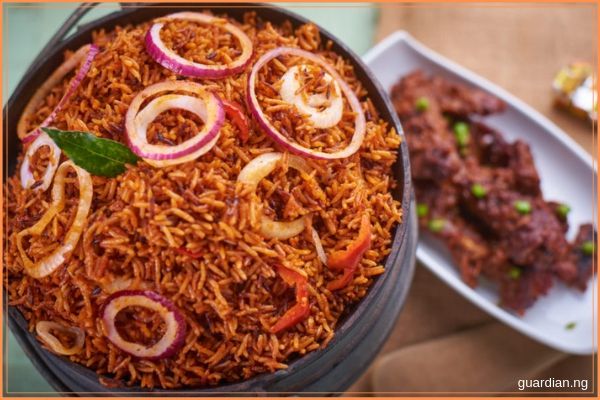
Jollof Rice (Nigeria)
Because Nigeria is such a vast vast country with many distinct regional cuisines, it is often hard to pin down a national favorite dish, but Jollof Rice pushes boundaries and is definitely in the running. It is enjoyed across other African countries like Ghana, Senegal, and Cameroun. Jollof is a simple, spicy, and tasty one-pot dish, which is somewhat similar in appearance to Paella Rice and is believed to be the origin of the Cajun dish jambalaya.
It’s often served with fried or roasted chicken and fried plantains at parties and other festive gatherings.
Cooking Ingredients
- Medium/long grain rice
- Ground tomatoes, onions, and pepper
- Small liver chops
- Green beans
- Cooking oil
Serving Variations
- Some cooks also include sweet corn and corned beef when cooking jollof rice, which enhances the appeal even more.
- In place of the fried chicken, some restaurants and families serve jollof rice with spicy shish kebabs cooked over braziers, known as suya.

Ful Medames (Egypt)
Pronounced as ‘fool’, Ful is a common traditional breakfast and a staple in every Egyptians’ diet. It is made of fava beans cooked with oil and salt and usually eaten with eggs, cheese, falafel, and pita bread. The preparation process is quite lengthy and it involves soaking the fava beans overnight cooking for hours over low heat to remove the casing of the beans. As such, there are pre-made versions of the dish in cans being sold in local markets and grocery stores. Ful Medames is packed with essential nutrients such as carbohydrates and iron and believed to have even satisfied the pharaohs.
Cooking Ingredients
- Egyptian fava beans
- Chopped flat-leaf parsley
- Extra-virgin olive oil
- 3 lemons, quartered
- Salt and pepper
- 4–6 cloves garlic, crushed
- Chili-pepper flakes
- Cumin
Serving Variation
- Some cooks prefer to thicken the sauce by throwing in a handful of red lentils into the water at the start of the cooking.
- Some people also cut up hard-boiled eggs in the bowl with the beans.
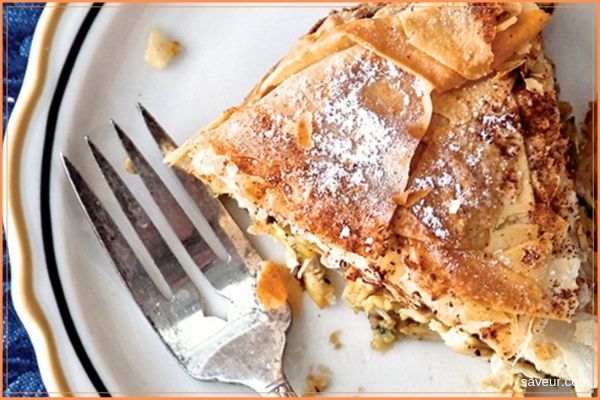
Pastilla au pigeon (Morocco)
Also known as B’stilla, this many-faceted feast dish is sweet and savory; substantial and delicate. It is a pie made from shredded cooked squab thickened with egg sauce and interspersed with paper-thin pastry and layers of nutty, spicy filling. Pastilla au pigeon is a labor-intensive dish to make, but it is considered a must-have for any grand celebration and feasts.
Cooking Ingredients
- Squabs
- Butter
- Onions
- Ground ginger, cinnamon, and turmeric
- Chopped fresh cilantro and parsley
- Eggs
- Salt and pepper
- Finely chopped toasted almonds
- Phyllo pastry
Serving Variations
In some cases, a pigeon can be hard to find so many people substitute with quail or Cornish game hen.
Home to hundreds of tribes, ethnic and social groups, the rich diversity of Africa reflects in its amazing cuisine delights, from cooking ingredients to techniques. Depending on the region you find yourself, African cuisine can be hot and spicy, filled with flavour, rich in ancient tradition to modern cuisine and also as colourful as the rainbow. So whichever part of Africa you find yourself, do not hesitate to try out the top local foods during your stay.

